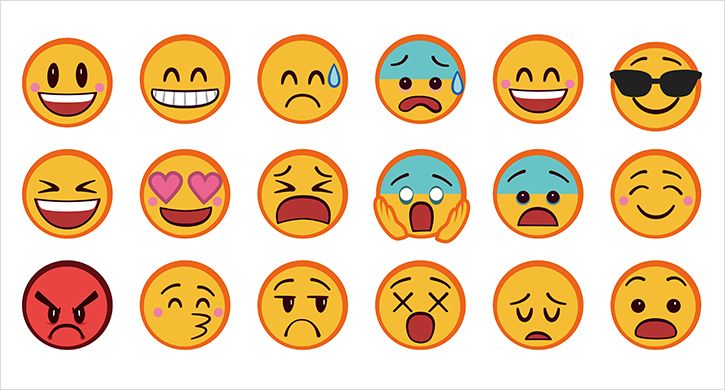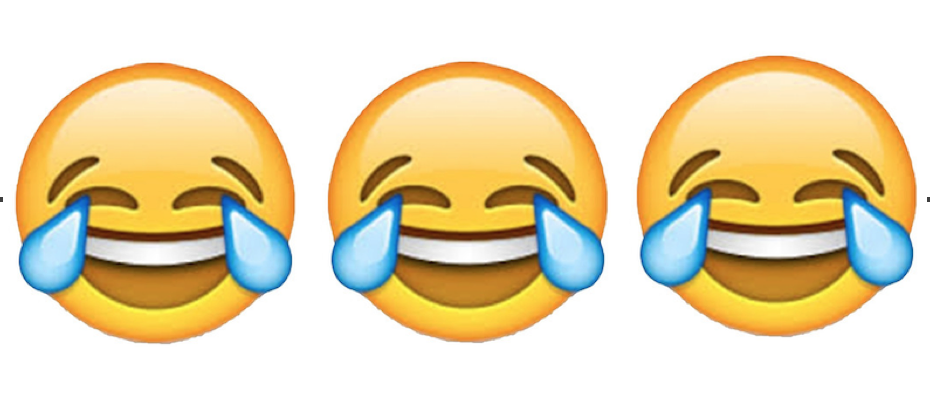
Whether you like them or not, the growing presence of emoji usage in marketing and business is something to take note of, and hopefully take part in. Emoji, the stylized ideograms of anything from a laughing face to a slice of pizza, are becoming more popular, especially with digital marketers. To make sure your business doesn’t get left behind, it's time to start thinking about how you can use emojis to enhance your brand.
A Brief History of the Emoji
The word emoji comes from the combination of the Japanese characters meaning "picture character". Emoticons, their punctuation/mechanical-keyword based counterparts such as :-), have deep historical roots, dating as far back as 1982 on an early computer science forum at Carnegie Mellon. Since their inclusion into smartphones as optional keywords, emojis have become nigh-ubiquitous. Just how ubiquitous you ask? Instagram's official engineering blog notes that half of Instagram text is emoji. If that doesn't meet your level of standards, what about how the Oxford English dictionary named the joy emoji below as the 2015 Word of the Year? Emojis are now without a doubt a commonplace digital shorthand.
There are currently 1,624 emojis curated by the Unicode Consortium (a real thing) to determine which new pictograms will appear in future operating systems. They're the ones responsible for the fact we have 10 train emojis, but not one taco appeared until the most recent update.
If we'd like to get really technical, emojis can be classified as discourse particles, where they have the practical effect of telling a customer how to feel. Another type of example would be including "/s" after a sentence to denote sarcasm as irony punctuation; but this never took off. Similarly a thumbs up at the end of a sentence or smiley face at the end of an ASAP email can elevate the mood and tone of the passage entirely.
Now that we have a little background on emojis, let's focus on how to use them for marketing and business purposes.
Using Emojis in Your Marketing Plan
In Email Marketing
The use of emojis in your email marketing copy all depends on your brand's personality. They can liven up otherwise dry content by providing a bit of humor or wit, or can simply be used to standout. A Search Engine Watch study found that emoji in email headlines can increase open rates by 30%.Below is an example of how United Airlines uses a relevant pictogram ✈️ to stand out amongst an otherwise cluttered inbox. Just make sure that they're relevant and not overdone. An emoji should be the salt, not the steak, of a meal.

In Social Media
As stated above, over half the written text on Instagram now comes in the form of these tiny pictures. Unlike email marketing, social networks provide a few options of how to use emojis, and you can choose to go all-in or keep it sparse. The shining example of the all-in approach is Bud Light's #4thOfJuly tweets comprised entirely of emoji. Their post was retweeted over 144,000 times when their original base was around 80,000. That's a lot of viral reach.Stringing together a series to tell a brief, hieroglyphic-style story is another option to freshen up otherwise bland copy. The flipside of emoticons is similar to United's approach with email headlines: use one or two to highlight the content of the message, such as a delivery truck next to your free shipping message.
At other times emoji can be used to engage with your audience. Here's an example of a retweet where emoji use matched perfectly to preexisting branding with TigerFitness.com's logo.
When NOT to Use Emojis
Just about any other time! I'm barely kidding. If you have to ask yourself if it would be appropriate to use an emoji the answer is likely going to be no. You don't want to appear unprofessional nor seem like you're pandering. Google has also stepped in and restricted emoji use from PPC and Shopping campaigns. Google classifies emojis as "repeated and unnecessary use of punctuation, capitalization or symbols" in their editorial guidelines. The change seems to be recent, however, as one marketer was able to sneak in emoji before being flagged.Now that you have the basics of emoji use down, give them a shot! Choose an emoji strategy based on your product and audience, and experiment with few different variations. Remember: one little character could go a long way.
What do you think about using emojis for online marketing? Tell us in the comments below!














